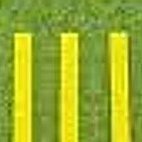External Hardrives. Reccomendations Please.
-
Recently Browsing 0 members
- No registered users viewing this page.
-
Topics
-
-
Popular Contributors
-
-
Latest posts...
-
1
-
41
USA UPenn ban trans athletes after probe involving swimmer Lia Thomas
Swimming at the higher levels is 90% technique. The other 10% is a mix of training, will to win and state of mind. -
16
Sugar In Thai Beers.
… and alcohol. Fear all that experience is going against you. The sugars are converted. Any sugary taste would inherently be in the original ingredients or might be added later for taste. Personally of the Thai beers, I find Leo the most ‘sugary’. Really notice it if haven’t drunk it for a while. Singha probably has less. IPAs generally probably have the most sugars for a beer. -
31
Politics Paetongtarn Suspended Over Hun Sen Call, Vows to Fight Charges
I was just commenting on the "uncle" part not the rest of the phonecall as criticizing it seems a misunderstanding of Thai culture. Just because it is a familiarity in English it does not have the same connotations in Thai. You can call a waiter 'norng' which is the same you would call a younger brother. It does not mean you are treating him as a family member. I don't think Thai has a word for "Sir" which would be the English equivalent. I hate it when Thai people call me 'Mister' which could be seen as the equivalent of 'Koon". -
3
-
78
Tourism Pattaya's New Tourist Tide: Indian Visitors Stir Up Debate
Keep your turban on.
-
-
Popular in The Pub





.thumb.jpeg.d2d19a66404642fd9ff62d6262fd153e.jpeg)






Recommended Posts
Create an account or sign in to comment
You need to be a member in order to leave a comment
Create an account
Sign up for a new account in our community. It's easy!
Register a new accountSign in
Already have an account? Sign in here.
Sign In Now